As the demand for mental health and recovery services continues to grow, there is an increasing need for peer support in the community. Peer support offers a valuable complement to traditional mental health services by providing a safe and supportive space for individuals to connect with others who have shared experiences. However, with the growth of the peer support model, few platforms exist that effectively support organizations or providers/coaches. Generic project management platforms struggle to meet the needs of growing peer organizations, and few custom solutions exist. Despite these challenges, it’s crucial for peer organizations to provide robust support to their coaches/providers and expand their services to reach more people in their community. This is where peer support software comes in – a powerful solution that can help organizations manage and scale their programs, track clients’ progress, and measure their impact.
What are the benefits of using peer support software?
Peer support software can bring numerous benefits to organizations and individuals. Here are some of the key advantages:
- Program Management: Peer support software can help organizations manage their peer support programs more effectively by providing a centralized platform for program coordinators, coaches, and providers. This can help streamline program management, reduce administrative burdens, and enhance collaboration among team members.
- Tracking and Reporting: Peer support software can help organizations track client progress and outcomes more efficiently, allowing coaches and providers to identify areas for improvement and adjust their approach as needed. This data can also be used to generate reports for funders and stakeholders, providing critical insights into program impact and effectiveness.
- Training and Support: Peer support software can help organizations provide better training and support to their coaches and providers, ensuring that they have the knowledge, skills, and resources needed to deliver high-quality services to clients. This can include access to training materials, peer mentorship, and other professional development opportunities.
- Care Coordination: Peer support software can help organizations facilitate care coordination among providers and with other healthcare providers, ensuring that clients receive comprehensive and integrated care. This can help improve outcomes, reduce hospitalizations, and enhance overall wellbeing.
- Counter Caregiver Burnout: Peer support software can help reduce caregiver burnout by providing coaches and providers with tools to manage their workload, track progress, and collaborate with colleagues. This can help promote staff retention, reduce turnover, and enhance the overall quality of care.
How does peer support software promote collaboration?
Peer support software plays an important role in promoting collaboration among coaches, providers, and clients within the mental health and recovery space. By providing a centralized platform for communication and engagement, it fosters collaboration in several ways:
- Enhanced Communication: Peer support software enables real-time communication and information sharing among coaches, providers, and supervisors. It may offer features such as instant messaging, discussion forums, and video conferencing, allowing for seamless and efficient communication regardless of geographical locations. This facilitates timely and effective collaboration, enabling coaches and providers to provide immediate support and guidance to clients.
- Shared Progress Tracking: Peer support software often includes features that allow providers and peers to track and share their progress. This shared tracking promotes collaboration by creating a transparent environment where clients can receive feedback and support from their peers and providers. It encourages open dialogue, enables goal setting, and fosters accountability within the peer support community.
- Group Support and Peer Learning: Many peer support software platforms facilitate group interactions and peer learning. This collaborative environment promotes a sense of belonging and provides a support network that extends beyond individual coaching or counseling sessions.
- Coordinated Care: Peer support software can also aid in coordinating care among different providers within an organization, or even outside of an organization. It allows for secure and efficient sharing of client information, treatment plans, and progress updates. This promotes a collaborative approach to care delivery, ensuring that all providers involved in a client’s journey are informed, aligned, and working together towards shared goals.
- Team Collaboration: For organizations offering peer support services, the software can facilitate collaboration among team members. It provides a centralized hub where coaches, providers, and program coordinators can collaborate on program management, share resources, and coordinate schedules. This promotes a cohesive and well-coordinated approach to delivering support services.
Data and Information
Data and tracking are crucial components of the peer support model. By collecting and analyzing data on client outcomes, organizations can identify areas for improvement and make data-driven decisions about program design, delivery, and evaluation.
Peer support software can help organizations track client progress more effectively, providing coaches and providers with a comprehensive view of their clients’ needs, strengths, and challenges. This data can be used to monitor client progress over time, identify areas for improvement, and adjust treatment plans as needed.
In addition to tracking client progress, peer support software can also help organizations monitor program impact and effectiveness. By collecting data on program outcomes, such as reductions in hospitalizations, improvements in quality of life, and increased engagement in treatment, organizations can demonstrate the value of their peer support programs to funders, stakeholders, and the broader community.
Peer support software can also help organizations track and manage their resources more effectively. By providing a centralized platform for program management, organizations can track staff time, allocate resources, and monitor program expenses more efficiently, ensuring that resources are used effectively and efficiently.
Overall, data and tracking are critical components of the peer support model. By collecting and analyzing data on client outcomes, program impact, and resource utilization, organizations can identify areas for improvement, make data-driven decisions, and continuously improve the quality and effectiveness of their peer support programs.
How do you ensure the security and privacy of data shared using peer support software?
Data security is a critical consideration for any organization working with sensitive client information, particularly in the healthcare sector. Peer support organizations must comply with strict privacy and security regulations, such as HIPAA, to ensure that client information is protected and confidential.
Peer support software can help organizations maintain data security by providing a secure platform for storing and managing client information. This includes implementing secure login protocols, data encryption, and regular backups to ensure that data is protected in the event of a security breach or system failure.
One way that organizations can further enhance data security is by partnering with platforms that are built on top of larger technology stacks, such as Salesforce or Microsoft Dynamics, that specialize in data security and compliance. Salesforce is a cloud-based customer relationship management (CRM) platform that is widely used in the healthcare sector due to its robust data security features and compliance with HIPAA regulations.
HIPAA Compliance and Peer Software
With the growth of the peer support model and organizations providing peer support for mental health and recovery, there has been a growing need for reliable and secure solutions that comply with HIPAA regulations. HIPAA (Health Insurance Portability and Accountability Act) sets the standard for protecting sensitive client information and ensuring privacy and security across the healthcare industry. It is important to note that HIPAA compliance goes beyond the software itself and encompasses organizational practices and policies. This includes training and guidelines for workers on how to handle client data securely and maintain confidentiality. While peer support software plays a crucial role in supporting HIPAA compliance, organizations must also implement appropriate measures to safeguard client data and maintain compliance in all aspects of their operations. Here are key considerations for ensuring HIPAA compliance when utilizing peer support software:
- Secure Data Storage: Peer support software should provide robust security measures to protect client data. This includes data encryption during storage and transmission, secure user authentication protocols, and secure server infrastructure. It is important to select a software solution that adheres to industry best practices and standards for data security.
- Access Controls: Implement stringent access controls within the peer support software. This ensures that only authorized individuals, such as coaches, providers, and program coordinators, have access to client information. User roles and permissions should be established to limit access to sensitive data, ensuring that confidentiality is maintained.
- Business Associate Agreements (BAAs): When using peer support software, organizations should enter into Business Associate Agreements with the software provider. A BAA is a legally binding contract that outlines the responsibilities of both parties in safeguarding client data. It ensures that the software provider understands and adheres to HIPAA regulations.
- Risk Assessments: Conduct regular risk assessments to identify potential vulnerabilities and risks to the security of client data. This involves evaluating the software’s infrastructure, data storage practices, and potential threats. Mitigate any identified risks and implement appropriate security measures to minimize the likelihood of a data breach.
- Policies and Procedures: Establish clear policies and procedures for handling client data within the peer support organization. This includes guidelines for accessing, sharing, and storing client information, as well as procedures for breach notification and incident response. Regular training and awareness programs should be conducted to educate staff members on HIPAA compliance requirements.
- Audit Logs and Monitoring: Peer support software should include audit log capabilities that record user activities within the system. These logs help track access to client data, detect any unauthorized access attempts, and provide a trail of activity for auditing purposes. Regularly review and monitor the audit logs to ensure compliance and identify any potential security issues.
- Ongoing Compliance Efforts: HIPAA compliance is an ongoing process. Regularly review and update security measures as new threats emerge or regulations change. Stay informed about HIPAA updates and industry best practices to ensure continuous compliance.
It is important to consult with legal and compliance experts specializing in HIPAA to ensure that the peer support software and organizational practices align with the necessary requirements. By following these guidelines, organizations can utilize peer support software while maintaining the security, privacy, and confidentiality of client data in compliance with HIPAA regulations.
Join our Recovery Circle! Sign up for our Peer Support and Addiction Recovery Newsletter
Get free info on peer research, work in the field, events, and stories of hope and recovery.
Get Support


Author: Ventus Rex
Posted/Updated on May 23, 2023





